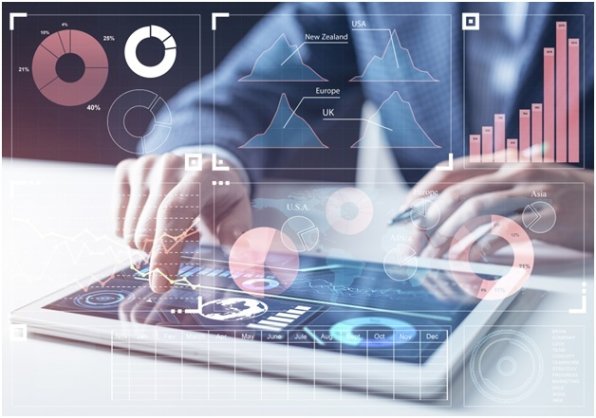There is an overwhelming amount of data out there for business leaders to harness — but not all of that data is in useful or even comprehensible forms. Fortunately, there is data visualization, which can help business leaders interpret, analyse and implement data more efficiently.
But how does data visualization work, and why should business leaders concern oneself? Read on to find out.

Table of Contents
What, Exactly, Is Data Visualization?
Raw data, like other raw materials, isn’t easy to use. Left completely unprocessed, data tends to be a jumble of information that is difficult or impossible for the average business leader to parse. Thus, data on its own isn’t a useful tool to help business leaders to make decisions. Fortunately, raw data can be transformed through the process of data visualization, making it comprehensible and actionable.
Data visualization is the art and science of presenting data in a visual format. Graphs and charts are the most recognizable forms of data visualization, but data scientists are employing more artful data visuals as data becomes more widespread and more complex. Data visualization has been used for centuries to communicate difficult information more effortlessly, first with maps providing geographical data and later with statistical graphs, pie charts and other visuals applied to military efforts. Today, it is difficult to imagine working with data without data visualization methods, and considering that reliance on data is only increasing, data visualization promises to be an incredibly important field going forward.
How Does Data Visualization Help?

Business leaders need a passing familiarity with data science, which they can gain through a short online data science course covering the essentials of the field. With this fundamental knowledge, and with a data science team well-versed in data visualization, business leaders gain access to data-driven insights that will aid their decision-making to provide greater business success.
In particular, data visualization offers the following benefits to business leaders and their organizations:
Simplicity. Raw data is complex, and when looking at raw data, many business leaders are unable to see the problem. Data visualization helps to simplify the story told by the data, so business leaders can easily understand and gain insight from the data they need to make decisions.
Response times. The easier it is to understand data, the faster business leaders can use that data to their advantage. Response times matter in every sector of business; speed helps an organization remain relevant and competitive, attract and retain customers and increase revenues overall. A well-designed chart or informational infographic should be able to communicate a dataset in a glance, so business leaders (and consumers) can understand and act quicker.
Pattern recognition. The human brain is skilled at finding patterns in data, but it can be easily overwhelmed. Data visualization makes it easier for the brain to identify patterns and trends, which means business leaders using visual data are better equipped to make informed decisions and develop stronger strategies.
Collaboration. Data visualization improves collaboration by giving every team member access to data in a more comprehensible format. When every team member is on the same page, the team can work more seamlessly to accomplish its goals. What’s more, data visualization can be useful in charting collaboration over time to better understand how effectively a team functions. Teams who see their collaborative efforts failing can find different methods for working together and achieving success.
How Can Business Leaders Gain Data Visualization?
The best way for an organization to gain access to high-quality data visualizations is to cultivate a talented data science team with experience building attractive and useful visuals. Having a dedicated data science team is valuable not only for the visuals they create — many of which can be used both for in-house decision-making and for external marketing efforts — but also for the accuracy of insight they can provide to business leaders, who might have less experience pulling useful information from raw datasets.
Though the term data visualization is relatively new, the act of presenting data in a visual format is centuries old. The sooner business leaders recognize the value of investing in data visualization, the sooner their organizations can benefit from faster, easier, better data.




